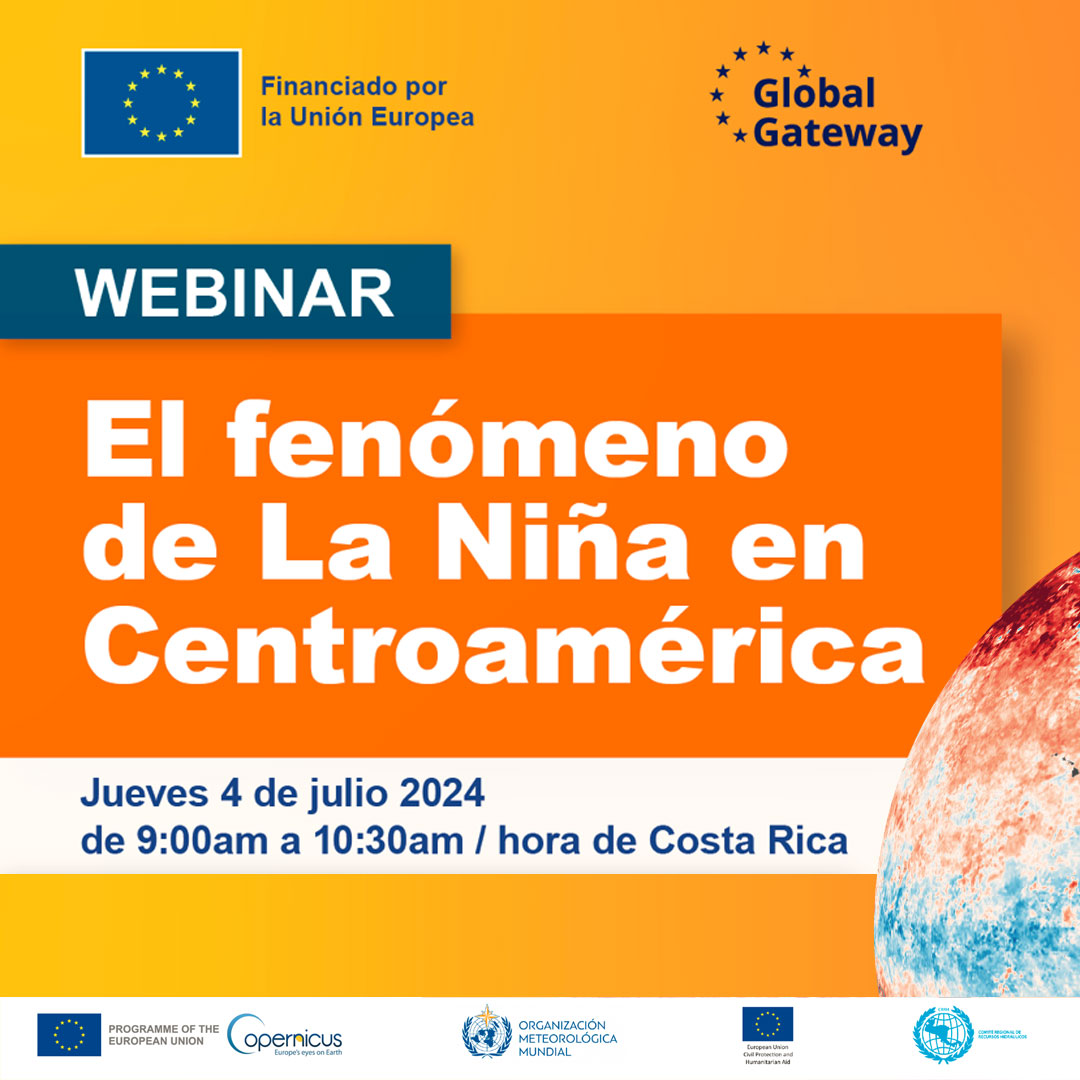Event: Webinar
Webinar La Niña Phenomenon In Central America
Excessive rainfall or intense heat and drought are the two faces of the meteorological pattern we call El Niño and La Niña, about which the non-specialist population knows little or nothing about its origin, how it is formed and how it reaches our coasts.

Details
Details of the Event
Concept Note and Agenda
LA NIÑA PHENOMENON IN CENTRAL AMERICA
Excessive rainfall or intense heat and drought are the two faces of the meteorological pattern we call El Niño and La Niña, about which the non-specialist population knows little or nothing about its origin, how it is formed and how it reaches our coasts.
El Niño and La Niña are oceanic events that occur in the equatorial Pacific every few years, between two and seven years on average, with effects all over the planet. It is closely related to another atmospheric (surface air pressure) event called the Southern Oscillation. Both are referred to by the acronym ENSO.
The duration and frequency of the ENSO phenomenon can range from 9 months to 3 years and is classified as weak, moderate and strong depending on its intensity. It usually starts from the middle of the year and reaches its maximum intensity in the last months of the year, weakening again in the middle of the following year, however, the LITTLE LADY occurs less frequently than the LITTLE CHILD.
During the occurrence of the NIÑA phenomenon, warm sea surface waters circulate towards the Asian region, carried westward by the trade winds. While colder deep water rises to the surface along South America in tropical latitudes. Nutrients are abundant and evaporation is decreasing, reducing rainfall and storm formation in the region.
In recent weeks, the Pacific Ocean has cooled substantially, according to data from specialised centres, and they indicate that the NIÑO phenomenon will come to an end between April and June 2024. For its part, the World Meteorological Organisation WMO estimates that there is an 80% chance that the NIÑA will occur; so the question now is, what will happen next and how will this climatic phenomenon affect the cyclonic season, which is expected to be very active in the Atlantic of the Central American and Caribbean region.
Faced with these recurrent situations in the Central American and Caribbean region, it is essential that public, academic and private actors, as well as society in general, take preventive measures (GIR), which will also be addressed in this webinar.
The importance of using scientific information to prepare for climate events
With the aim of continuing to advance in strengthening the capacities of different actors in the region of Central America and the Caribbean in the public, academic and private sectors, the European Union, through the EURECA facility, plans to hold a second virtual conference on the phenomenon of LA NIÑA, focusing on climatic and atmospheric phenomena, floods and disasters caused by heavy rains, in which we can have an updated report on the scientific climate outlook for the rainy season in Central America from the World Meteorological Organization WMO, The Central American Regional Water Resources Secretariat (CRRH), the different satellite information platforms offered by the Copernicus Programme for the monitoring of these phenomena and the Emergency Management Service (EMS), as well as the approaches to the attention of the Central American region, The European Union’s Civil Protection and Humanitarian Aid Office ECHO/EU and the Stakeholder engagement liasion officer Copernicus/LAC and former Executive Secretary of CEPREDENAC on integrated risk management in the face of the La Niña phenomenon in Central America, as well as the approaches of the European Union’s Civil Protection and Humanitarian Aid Office ECHO/EU and the Stakeholder engagement liasion officer Copernicus/LAC and former Executive Secretary of CEPREDENAC on integrated risk management in the face of the La Niña phenomenon in Central America.
Agenda:
Welcome:
- Matteo Banti (Head of Cooperation for Costa Rica, Panama and Central America, Delegation of the European Union in Costa Rica) /5min.
- Stephane Ourevitch (EUSSO Copernicus Programme Support Office) /10min.
Scientific approach: - Rodney Martinez/World Meteorological Organization WMO/15min.
- Maximiliano Campos Executive Secretary/IA, Regional Water Resources Committee- CRRH/15min.
Integrated Risk Management GIR and humanitarian assistance: - Álvaro de Vicente, Director of the Regional Office ECHO/Panama /10 min.
- Claudia Herrera, Stakeholder engagement liaison officer Copernicus/LAC-/15min
Closing of the meeting: - Questions and answers. Moderator, Jorge Cabrera, remote sensing expert.
Date and Time
Thursday 4 July 2024 9:00 am – 10:30 am(GMT-06:00)
Virtual Event
The Event is Over!


